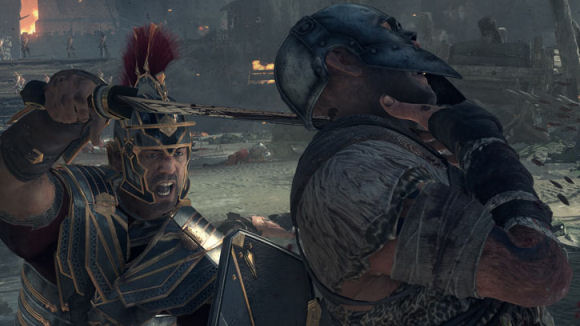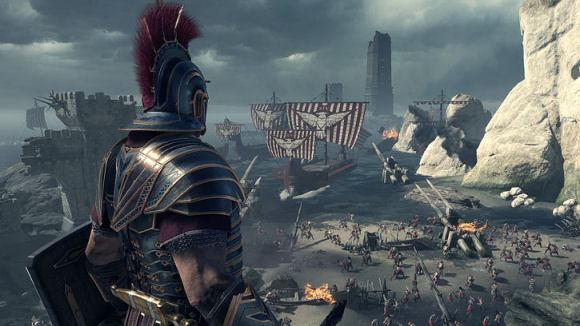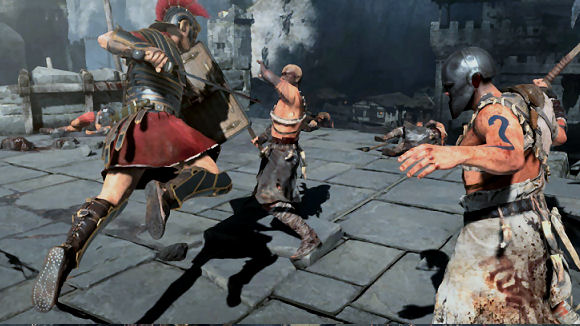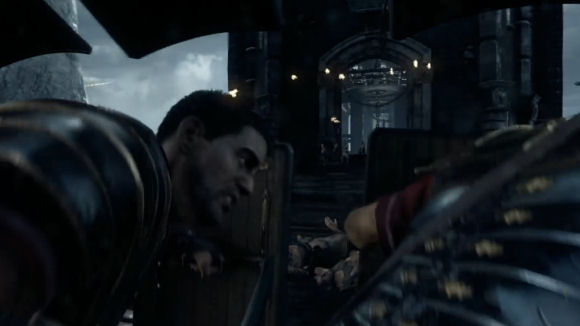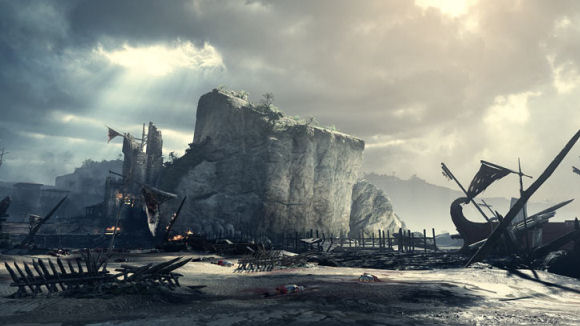Nobody can reasonably have high expectations of launch titles. No developer is going to squander its best work on a title that will only be played by the relatively small segment of gamers who are going to pick up a new console right off the bat. This doesn’t mean that launch titles have to be bad, nor is that a justification for it, simply that we shouldn’t be expecting a generation’s best work on opening day. Ryse: Son of Rome for the Xbox One is a launch title that’s had more than its fair share of negative attention leading up to launch, probably in part due to a lot of misguided marketing. But the truth is that Ryse is actually a pretty fantastic for a launch title, and a pretty good game on its own.
Ryse puts you in the role of Marius Titus, a Roman legionary whose family was murdered by barbarians before his eyes. Driven to take vengeance, he joins up with the Fourteenth Legion and embarks on a campaign loosely based on the Roman invasion of Britain. But not all is as it seems and Marius’ quest will take him from deep into the heart of Britannia and back to Rome in his quest for revenge. The plot isn’t exactly groundbreaking, but it does present a setting that’s been largely ignored in gaming and presents it beautifully. Ryse is obviously intended to show off the Xbox One’s abilities and the game is undeniably gorgeous. The character models are immaculately detailed and there are a few select scenes that you could almost believe were live action. The settings have also been crafted in similar splendor, taking you through glorious Roman streets, ominous savage encampments and a slightly over-the-top piece of showmanship at the Colosseum that shows off what the Xbox One is capable of. If you’re in the market for lots of big, explosive settings with plenty of eye candy then Ryse is vying for your business.
The game is a hack-and-slash brawler through and through and almost every moment you are in control of Marius will be spent putting your gladius to work. The combat mechanics are fairly simple; you can attack, shield-break, block and dodge. Chaining these moves into long combos will reward you with experience points to upgrade Marius. The game does take some steps to prevent it from being purely button mashing; properly timing your attacks in step with the battle animations will result in quicker, deadlier strikes and precise blocking can stagger attackers, as well as award more XP. The timing doesn’t feel instinctive however, and I didn’t have much luck getting the hang of it, but you will still be able to play the game without mastering it. Marius fights with cinematic flourish, gracefully slicing through enemy hordes with the ease that only action heroes can manage. When enemies have been sufficiently damaged a skull icon appears over their head, indicating they can be executed. By pressing the right trigger Marius will enter into a brief choreographed scene where he will cut his foe down, often brutally dismembering or impaling him. These moves are part quick time event, as your enemy will flash either blue or yellow, requiring you to hit the corresponding button on the controller. You can’t fail these events and Marius will still pull off the execution flawlessly even if you don’t hit any button, but better timing will result in a better ranking and more XP. Executions can be set to reward you with either a boost to your health, focus (Ryse’s equivalent of bullet time), XP or damage. Marius doesn’t regenerate health or focus automatically, so pulling off executions becomes a vital part of your strategy. All together the game takes some steps to add a little depth to a fairly simple set of mechanics. Hack-and-slash enthusiasts will no doubt find the combat shallow, and by the end it I did feel it had worn a little thin, but for most of the single-player campaign it felt like good simple fun.
Mechanically the game has a few issues. While controlling Marius feels fairly tight, the game’s camera is another story. For the most part the camera is pretty good at automatically focusing on what you want to be seeing, although sometimes during executions it will put another enemy or piece of scenery in the way which makes it impossible to see the button cues. You’re in for a bit of trouble though if you want to see something that the camera isn’t already looking at; the controls are jerky at best, and sometimes it feels like your trying to wrest control away from another person as you try to point the camera one way while it tries to go the other. While you won’t need to adjust the angles too often, you almost certainly will have a hard time when you do. The game also has a few buttons pull double duty for occasions when you are supposed to interact with the environment. When Marius approaches a pile of spears you will be prompted to press A to pick them up, but even despite the prompt unless you are standing in a very precise spot you will block instead. These interactions feel really sloppy and definitely detract when trying to accomplish something in the heat of battle.
As I said, you will spend just about every minute of Ryse killing something, but not all this slaughter will be done at the end of your own sword. Marius will often be accompanied by a troop of other legionaries who will follow him into battle. In regular combat theses guy are almost completely useless. They’ll stand on the outskirts, usually watching you fight as though they’re mesmerized by your sweet moves, although sometimes they will just be staring into space. While it obviously wouldn’t be any fun if your cohort were to fight your battles for you, this is just poorly done. Your men become much more useful when they are put to work as archers, or you form a testudo formation, creating a wall of shields to deflect arrow fire. Using the Kinect you can order your men to fire volleys on enemies and the first time I yelled an order to my archers and watched them cut down a throng of barbarians felt like the next generation had arrived in true glory. This feeling was harshly tempered when I realized that commands can only be issued when the game prompts them (And also that I don’t have to bellow them like a line out of movie); unless the game has expressly given you the option you can’t give orders. This means there’s no spontaneity to battlefield commands and you can’t turn the tables on a difficult battle by calling for archers are the right time. This feels like a squandered opportunity, especially for a game that puts you in control of a Roman legion. Similarly, the testudo formation can only be activated at designated sections in the game, although the novelty of this one never grew old for me. That one was cool every time.
Actually, Ryse is pretty linear the whole way through. Levels are pretty much a straight line punctuated with severed limbs and rivers of blood. While the game never pretends to be anything but a roller coaster ride, some players by might be turned off by just how straight the tracks are. Most of the levels are designed as to be progressed directly from point A to B, and in the few levels that present you with branching pathways it never appears that there’s any difference between the two options. Unfortunately there isn’t much chance to explore along the way, which is a shame because it all looks so nice.
As you can tell, the plot is pretty predictable. Marius’ quest for vengeance is pretty much standard fare and you can probably figure out the game’s entire story from the box art. And for the most part Ryse knows well enough that nobody is playing it for the story. The first half of the game can be effectively described in short sentences and primal screaming, and while it’s not without its tropes, we are spared the agony of a story that wants to be deeper than it actually is. My only gripe is about halfway through the game we are introduced to two central antagonists who are just plain annoying. The game also doesn’t do too much with its setting, which is disappointing, although I give it credit for even choosing the Roman Empire in the first place. Overall the game’s plot is a secondary consideration. If you can enjoy a game with a shallow narrative it is predictable but satisfying.
In the end, Ryse doesn’t exactly hit it out of the park, but it’s still a pretty good opening act for the Xbox One. I actually wanted to rate it at four, but there are just enough minor issues that I couldn’t quite justify it. Getting down to brass tacks, the main campaign lasts maybe eight hours and while the replay value will vary between individuals I wouldn’t say you’ll come back to it time after time. I really enjoyed my time with this title, but as far as value is concerned I think you will better served if you can be patient and pick it up as a rental, or wait for a few months for the price to come down. However, if you’ve picked up the Xbox One and want something to play in it right now, Ryse is actually a pretty nice package. If nothing else, it bodes well as a sign of what’s to come.


